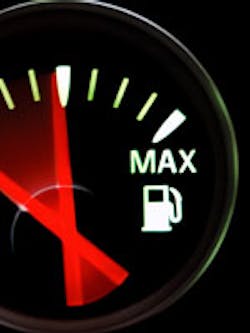Regarding fuel efficiency, especially in PHEVs, the old school approach of miles per gallon (mpg) was a topic worth mentioning by several presenters. Confusion over what consumers can realistically expect from a hybrid or plug-in hybrid could slow buyer acceptance. Dennis Simanaitis, engineering editor of Road & Track magazine, kicked off the symposium by noting that MPG needs replacing with a new metric. As an example, he showed potential calculations for the Chevy Volt extended range vehicle that will be introduced later this year. Using today’s approach, the numbers ranged from 42.5 to 230 and even 1538 mpg depending on how much driving was done prior to recharging the battery.
Mike Duoba, research engineer at the Advanced Powertrain Research Facility, Argonne National Laboratory pointed out that some products’ ratings are clearly understood by consumers such as a 150 W light bulb or a 200 hp engine and on any given day, they achieve the same results. Unlike a vehicle, these ratings do not change based on consumer usage. As chair of the SAE task force revising SAE J1711, the Recommended Practice for Measuring the Exhaust emissions and Fuel Economy of Hybrid-Electric vehicles, Duoba and his committee are investigating measurement techniques that can provide more meaningful fuel economy numbers to consumers.
Duoba noted that HEVs are more sensitive to aggressive driving than internal combustion engine (ICE) vehicles, because increased powertrain efficiency tends to mask the increased energy consumption in ICE vehicles during aggressive driving. PHEVs are a special area that can really provide wide and often absurd MPG ratings especially if the vehicle is only driven within its electric-only design range before recharging. A utility factor (UF) is one of the techniques to make the number more meaningful. The UF is based on the National Household Transportation Survey to arrive at a more likely number for most drivers. In his “work in progress” analysis, Duoba showed that depending on the approach they take, they can provide drivers with numbers closer to what they may experience, but produce some “strangely gigantic depleting mode results.” Alternatively, they can provide a better technique for direct comparison between PHEVs but the consumer may never match the results. The work continues to provide a useful number for EPA ratings and managing consumer expectations.
